
Automated Software Engineering
Scope & Guideline
Exploring New Frontiers in Software Engineering
Introduction
Aims and Scopes
- Automation in Software Testing:
Research that explores automated methods for testing software, including automated test generation, regression testing, and fault localization. - Machine Learning Applications:
The application of machine learning techniques to various software engineering problems, such as defect prediction, code review, and requirement analysis. - Software Security and Vulnerability Detection:
Studies focused on identifying and mitigating vulnerabilities in software systems, including automated security testing and analysis of smart contracts. - Model-Driven Engineering:
Research on using models to automate aspects of software development, including model transformation, code generation, and requirements elicitation. - Human-Machine Collaboration:
Investigation into how human developers can collaborate with automated systems, including tools that enhance developer productivity and decision-making. - Advanced Software Architectures:
Explorations into new architectural paradigms for software systems, including microservices, cloud-based architectures, and embedded systems.
Trending and Emerging
- Deep Learning in Software Engineering:
There is a significant rise in the use of deep learning techniques for various software engineering tasks, including defect prediction, code generation, and sentiment analysis. - Automated Code Review and Analysis:
Recent publications emphasize the automation of code review processes, improving the efficiency and effectiveness of code quality assessments. - Quantum Software Engineering:
Emerging research is focusing on the unique challenges and methodologies associated with developing software for quantum computing environments. - Integration of AI in Development Processes:
The integration of artificial intelligence into software development is a growing theme, with studies exploring AI-assisted coding, debugging, and project management. - Security in Software Development:
The focus on software security, particularly in the context of automated vulnerability detection and analysis, is increasingly important in the current research landscape.
Declining or Waning
- Traditional Software Development Methodologies:
There is a noticeable decline in research focused on traditional methodologies such as waterfall or V-model approaches, as newer agile and automated frameworks gain traction. - Static Analysis Techniques:
Research on static code analysis appears to be decreasing, possibly due to the rise of more dynamic and machine learning-based approaches that provide better flexibility and insights. - Manual Testing Approaches:
As automation continues to dominate, the emphasis on manual testing techniques is diminishing, with fewer studies exploring traditional manual testing strategies. - Legacy Systems Maintenance:
The focus on maintaining and upgrading legacy systems is waning, as more research shifts towards modern development practices and cloud-native solutions. - Single-Platform Development:
Research concentrating on development for single platforms is decreasing, as there is a growing trend towards cross-platform and multi-device applications.
Similar Journals
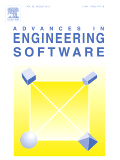
ADVANCES IN ENGINEERING SOFTWARE
Pioneering Research at the Intersection of Engineering and Software.ADVANCES IN ENGINEERING SOFTWARE, published by Elsevier Science Ltd, stands at the forefront of interdisciplinary research in the realms of engineering and software development. With an impressive impact factor reflected in its Q1 and Q2 rankings in the Engineering (Miscellaneous) and Software categories, respectively, this journal serves as an essential platform for researchers and practitioners alike to disseminate innovative findings and methodologies from 1982 to the present. Strategically positioned within the United Kingdom, it engages scholars, professionals, and students by publishing high-quality articles that emphasize advancements in software applications related to engineering challenges. Although it does not currently offer open access, the journal remains highly regarded within the academic community, consistently attracting impactful research and maintaining a commendable Scopus ranking within the top tiers of both general engineering and software disciplines. Explore the latest contributions to enhance your knowledge and stay updated on trailblazing developments in engineering software.

Journal of Cryptographic Engineering
Driving excellence in cryptographic research and secure technologies.The Journal of Cryptographic Engineering, published by Springer Heidelberg, is a prominent platform dedicated to advancing the field of cryptography and its applications in secure communication and information security technologies. With the ISSN 2190-8508 and E-ISSN 2190-8516, this journal showcases rigorous and innovative research contributions from 2011 to 2024, reflecting its commitment to excellence in academic publishing. Recognized among the Q2 category in Computer Networks and Communications and Software, it ranks impressively within the Scopus framework, securing positions in the 59th and 54th percentiles respectively. The Journal aims to facilitate a comprehensive understanding of cryptographic techniques, promote collaboration among researchers, and provide a vital resource for students and professionals. By maintaining high standards of peer review and providing a platform for cutting-edge research, it plays a crucial role in shaping the future of cryptographic engineering.

International Journal on Software Tools for Technology Transfer
Empowering Research at the Intersection of Software and TechnologyInternational Journal on Software Tools for Technology Transfer (ISSN: 1433-2779; E-ISSN: 1433-2787), published by SPRINGER HEIDELBERG, stands as a pivotal platform for advancing the intersection of software engineering and technology transfer. Operating out of Germany, this esteemed journal has contributed significantly to the field since its inception in 1997 and continues to disseminate cutting-edge research through 2024. With a current impact footprint reflected in its Q2 status in Information Systems and Q3 in Software categories, it holds an impressive Scopus rank in the top 60th and 52nd percentiles respectively. Researchers, professionals, and students alike will find its commitment to exploring innovative software tools and techniques essential for enhancing technology transfer processes invaluable. Although the journal does not offer open access, its rigorously peer-reviewed articles are crucial for those seeking high-quality research insights.
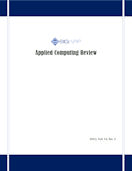
Applied Computing Review
Empowering Innovation in Applied ComputingApplied Computing Review is a prominent academic journal published by the Association for Computing Machinery (ACM), an esteemed organization known for advancing the computing profession. Focusing on the intersection of practical applications and theoretical foundations, this journal serves as a vital platform for disseminating research in the field of applied computing, facilitating knowledge sharing among researchers, professionals, and students alike. With an ISSN of 1559-6915, the journal encompasses a wide array of topics including software engineering, data analytics, and application development, addressing current trends and challenges in the industry. Although it does not offer open access, its rigorous peer-review process ensures high-quality publications that significantly contribute to the discipline. Positioned within a competitive landscape, Applied Computing Review is dedicated to fostering innovation and providing insightful perspectives that inspire further research, thereby solidifying its importance in the field of applied computing.
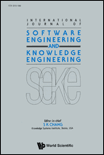
INTERNATIONAL JOURNAL OF SOFTWARE ENGINEERING AND KNOWLEDGE ENGINEERING
Cultivating Knowledge through Rigorous ResearchThe INTERNATIONAL JOURNAL OF SOFTWARE ENGINEERING AND KNOWLEDGE ENGINEERING, published by WORLD SCIENTIFIC PUBL CO PTE LTD in Singapore, is a pivotal platform for disseminating cutting-edge research in the fields of software engineering and knowledge systems. With an ISSN of 0218-1940 and an E-ISSN of 1793-6403, this journal has been a reliable resource for scholars and practitioners since its inception in 1996. The journal is indexed across multiple prestigious databases, reflecting its relevance with a Category Quartile ranking of Q3 in both Computer Graphics and Computer Networks for 2023, and it maintains a steady trajectory of growth and scholarly contribution. Although not an Open Access journal, it is accessible through various academic institutions and libraries, ensuring researchers can engage with high-quality, peer-reviewed articles that explore advancements, theoretical developments, and practical applications in software and knowledge engineering. As it converges towards its end year of 2024, this journal continues to foster innovation and knowledge exchange, making it an essential resource for anyone invested in these dynamic fields.

SOFTWARE QUALITY JOURNAL
Bridging theory and practice for software success.SOFTWARE QUALITY JOURNAL, published by Springer, is a preeminent platform dedicated to advancing the field of software engineering and quality assurance. With an ISSN of 0963-9314 and an E-ISSN of 1573-1367, this journal serves as a vital resource for academics and practitioners alike, bridging the gap between theoretical frameworks and practical applications. The journal is recognized for its impactful contributions, holding a remarkable Q1 ranking in Media Technology and demonstrating strong performance with Q2 placements in Safety, Risk, Reliability and Quality, as well as Software, solidifying its reputation in the academic community. As of 2023, the journal is ranked 64th in Safety, Risk, Reliability and Quality and 176th in Computer Science Software on Scopus, showcasing its relevance and influence. Covering a broad range of topics from software quality metrics to risk management strategies, SOFTWARE QUALITY JOURNAL aims to foster innovation and best practices in software development. Join a community of leading researchers and professionals committed to enhancing the quality and reliability of software systems.
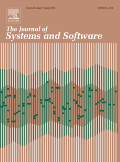
JOURNAL OF SYSTEMS AND SOFTWARE
Shaping the Future of Software Engineering and Information Systems.JOURNAL OF SYSTEMS AND SOFTWARE, published by Elsevier Science Inc, is a premier academic journal that serves as a vital platform for the dissemination of cutting-edge research in the fields of software engineering, information systems, and hardware architecture. With an impressive impact factor and consistently ranking in the Q1 category across several relevant sectors, including hardware and architecture (ranked 33rd out of 177), information systems (ranked 72nd out of 394), and software (ranked 75th out of 407) as of 2023, this journal is recognized for its rigorous peer-review process and high-quality publications. Established in 1979, the journal has become an essential resource for researchers, professionals, and students looking to stay abreast of the latest advancements and emerging trends in systems and software. While the journal does not currently operate under an open-access model, it ensures wide visibility through its indexed publications and is dedicated to advancing scholarly discourse in computer science. With contributions from leading experts in the field, JOURNAL OF SYSTEMS AND SOFTWARE continues to shape the landscape of software and systems research.
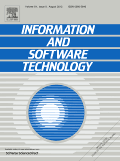
INFORMATION AND SOFTWARE TECHNOLOGY
Advancing the Frontiers of Software and Information TechnologyINFORMATION AND SOFTWARE TECHNOLOGY, published by Elsevier, is a leading journal that stands at the forefront of the fields of software engineering, information systems, and computer science applications. Since its inception in 1970 and with a focus extending to 2025, this esteemed publication has made significant contributions to the discourse on technological advancements and innovations. In 2023, it has achieved a remarkable Q1 categorization across multiple domains, including Computer Science Applications, Information Systems, and Software, reflecting its excellence and relevance in the academic community. With Scopus rankings that place it in the top percentiles in its categories (85th, 83rd, and 83rd respectively), the journal serves as an essential platform for researchers, professionals, and students eager to disseminate and engage with cutting-edge research and developments. While it does not currently offer Open Access options, the knowledge curated within its pages remains invaluable for advancing the fields of information technology and software development.
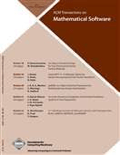
ACM TRANSACTIONS ON MATHEMATICAL SOFTWARE
Transforming mathematical research with innovative software applications.Welcome to the ACM Transactions on Mathematical Software, a prestigious journal published by the Association for Computing Machinery (ACM). With an ISSN of 0098-3500 and an E-ISSN of 1557-7295, this journal has been at the forefront of innovation in the field since its inception in 1975. It serves as a critical platform for researchers, professionals, and students, facilitating the dissemination of advanced mathematical techniques and software developments. The journal is recognized for its outstanding impact, evidenced by its Q1 classification in Applied Mathematics and Q2 in Software for 2023, along with an impressive Scopus ranking placing it in the 85th percentile for Applied Mathematics and the 58th percentile for Computer Science. Our objective is to publish high-quality research that explores new methodologies in mathematical software and their applications, driving the field forward. Although not an open access journal, the relevance and rigor of the content ensure that it remains a valuable resource in mathematical and computational sciences. Join us in exploring the latest in mathematical software and contribute to shaping future advancements.
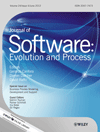
Journal of Software-Evolution and Process
Exploring Dynamics in Software DevelopmentThe Journal of Software-Evolution and Process, published by WILEY, is a premier academic journal dedicated to advancing knowledge in the field of software evolution and methodologies. With an impact factor that places it in the Q2 quartile of software-related research, this journal is widely recognized for its rigorous peer-reviewed articles that explore the dynamics of software development, maintenance, and transformation. Addressing the challenges faced by software engineers and researchers, the journal seeks to provide innovative insights and solutions, fostering both theoretical understanding and practical applications. Since its inception in 2012, Journal of Software-Evolution and Process has contributed significantly to the academic community, featuring research that is highly relevant to contemporary trends and technologies in the software industry. For those committed to enhancing their expertise, this journal provides an invaluable resource via open access options.